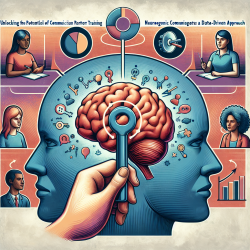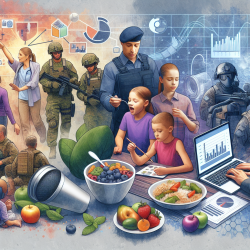In the field of speech-language pathology, creating positive outcomes for children often involves a multi-faceted approach that includes data-driven decisions and evidence-based practices. Recent research by Balcombe and De Leo (2022) in their article "The Potential Impact of Adjunct Digital Tools and Technology to Help Distressed and Suicidal Men: An Integrative Review" sheds light on the potential of digital tools to enhance therapeutic outcomes. This review provides valuable insights that can be leveraged to improve mental health services, particularly for men who are often underserved in traditional mental health settings.
Understanding the Research
The integrative review conducted by Balcombe and De Leo focuses on the effectiveness, feasibility, and accessibility of digital mental health tools in assisting distressed and suicidal men. The study synthesizes data from various sources, including Sage, ScienceDirect, Google Scholar, and CrossRef databases, and evaluates the outcomes of digital interventions in suicide prevention.
Key Findings
- Men are at a higher risk of suicide compared to women, with a significant prevalence of non-reporting of mental health symptoms due to societal norms around masculinity.
- Digital tools such as video conferences, social networks, and smartphone apps show promise in providing accessible mental health support.
- Self-guided digital interventions are particularly effective for men, who may find it difficult to seek traditional mental health services.
- Technology-enabled models of care can offer better and faster understanding of individual needs, thereby improving linkage to appropriate mental health services.
Implementing Digital Tools in Therapy
For practitioners, integrating digital tools into therapy sessions can significantly enhance outcomes for children and adolescents. Here are some actionable steps:
1. Utilize Self-Guided Digital Interventions
Self-guided interventions can be integrated into therapy plans, allowing clients to access support outside of traditional therapy hours. Tools like mobile apps and online platforms can provide continuous support and crisis intervention.
2. Incorporate Technology-Enabled Models of Care
Adopting technology-enabled care models can help practitioners better understand and address the specific needs of their clients. This includes using algorithms and machine learning to predict suicidal behaviors and provide timely interventions.
3. Promote Digital Mental Health Resources
Educate clients and their families about the availability and benefits of digital mental health resources. Providing a list of trusted apps, online forums, and telehealth services can empower clients to seek help when needed.
Encouraging Further Research
While the findings of Balcombe and De Leo are promising, there is a need for ongoing research to validate the effectiveness of digital interventions across diverse populations. Practitioners are encouraged to stay updated with the latest research and contribute to studies that explore the impact of digital tools in mental health care.
To read the original research paper, please follow this link: The Potential Impact of Adjunct Digital Tools and Technology to Help Distressed and Suicidal Men: An Integrative Review.










